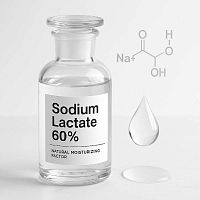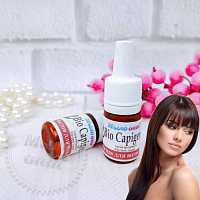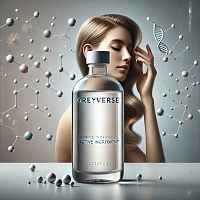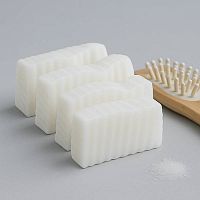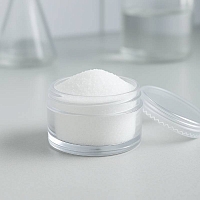-
 Absolutes
Absolutes
-
 Active Complexes
Active Complexes
-
 Actives and Peptides for Cosmetics
Actives and Peptides for Cosmetics
-
 Amino Acids
Amino Acids
-
 Food Flavorings
Food Flavorings
-
 Ayurveda
Ayurveda
-
 Vitamins
Vitamins
-
 Gelling Agents and Thickeners
Gelling Agents and Thickeners
-
 Hydrosols and Floral Waters
Hydrosols and Floral Waters
-
 Hydrolyzed Proteins
Hydrolyzed Proteins
-
 Fragrant and aromatic substances
Fragrant and aromatic substances
-
 Acids, Salts, Alcohols, and Alkalis
Acids, Salts, Alcohols, and Alkalis
-
 Preservatives and Antioxidants
Preservatives and Antioxidants
-
 Cosmetic Raw Materials
Cosmetic Raw Materials
-
 Dyes, Pearlescents, and Glitters
Dyes, Pearlescents, and Glitters
-
 Face Masks, Scrubs, and Dried Flowers
Face Masks, Scrubs, and Dried Flowers
-
 Oils, batters, macerates, oil mixtures
Oils, batters, macerates, oil mixtures
-
 Candle Supplies
Candle Supplies
-
 Melt and Pour Soap Bases
Melt and Pour Soap Bases
-
 Base for cosmetics, cream, serum, shampoo
Base for cosmetics, cream, serum, shampoo
-
 Fragrance Oils
Fragrance Oils
-
 Surfactants
Surfactants
-
 Peelings for Skin
Peelings for Skin
-
 Herbal Powders and Plant
Herbal Powders and Plant
-
 Silicones and Conditioning Surfactants for Hair
Silicones and Conditioning Surfactants for Hair
-
 Raw materials for dietary supplements
Raw materials for dietary supplements
-
 Packaging for Cosmetics and Perfumes
Packaging for Cosmetics and Perfumes
-
 Molds, Packaging, Tools
Molds, Packaging, Tools
-
 Organic Extracts
Organic Extracts
-
 Emollients for Cosmetics
Emollients for Cosmetics
-
 Emulsifiers
Emulsifiers
-
 Essential Oils
Essential Oils
Sodium Lactate 60%: The Multifunctional Humectant and pH Regulator for Superior Cosmetics
Sodium Lactate 60% is a highly effective, naturally derived humectant and buffering agent widely utilized in the cosmetic industry. This clear, slightly viscous liquid is the sodium salt of lactic acid, produced by the fermentation of sugar. Its exceptional water-binding properties and ability to adjust and maintain pH make it an invaluable ingredient for a diverse range of skincare, haircare, and personal care formulations, contributing to enhanced hydration, improved skin barrier function, and product stability.
Diverse Applications in Cosmetic Formulations:
Sodium Lactate 60% offers a multitude of benefits and can be incorporated into various cosmetic products:
- Moisturizers and Hydrating Serums: As a potent humectant, Sodium Lactate attracts and retains moisture in the skin's stratum corneum, providing long-lasting hydration and combating dryness. It contributes to a smoother, more supple complexion and enhances the efficacy of other moisturizing ingredients.
- Facial Toners and Mists: Its ability to regulate pH makes Sodium Lactate an excellent addition to toners and facial mists, helping to restore the skin's natural acid mantle after cleansing and preparing it for subsequent skincare steps.
- Exfoliating Products (AHAs): While milder than lactic acid itself, Sodium Lactate can contribute to gentle exfoliation by weakening the bonds between dead skin cells, promoting a smoother and brighter skin surface. It can also buffer the stronger acids in exfoliating formulations, reducing potential irritation.
- Soaps and Cleansers: Sodium Lactate can help to mitigate the drying effects of surfactants in soaps and cleansers by contributing to moisture retention. It can also improve the skin feel of these products, leaving it softer and less stripped.
- Haircare Products: In shampoos, conditioners, and hair masks, Sodium Lactate acts as a humectant, drawing moisture to the hair shaft and improving hydration, manageability, and shine. It can also help to balance the pH of the scalp.
- Body Lotions and Creams: Its moisturizing properties make Sodium Lactate a valuable ingredient in body lotions and creams, providing relief from dryness and promoting soft, smooth skin all over the body.
- Sunscreen Formulations: Sodium Lactate can contribute to the overall skin feel and hydration of sunscreen products, helping to counteract any potential drying effects of UV filters.
- Foot Care Products: Due to its humectant and mild keratolytic properties, Sodium Lactate is beneficial in foot creams and treatments designed to soften rough, dry skin and calluses.
- Hand Creams and Sanitizers: It can enhance the moisturizing properties of hand creams and help to offset the drying effects of alcohol in hand sanitizers, leaving hands feeling softer and more comfortable.
- pH Buffering Agent: Sodium Lactate plays a crucial role in maintaining the desired pH range of cosmetic formulations, ensuring stability, efficacy of active ingredients, and optimal skin compatibility.
Our online store provides worldwide shipping.
Formulation Example: Hydrating and pH-Balancing Facial Toner
| Ingredient | Phase | Percentage (%) | Notes |
|---|---|---|---|
| Distilled Water (Aqua) | A | 85.0 | Base |
| Sodium Lactate 60% | A | 5.0 | Humectant, pH regulator |
| Glycerin | A | 3.0 | Humectant |
| Panthenol (Pro-Vitamin B5) | A | 2.0 | Moisturizing and soothing |
| Allantoin | A | 0.5 | Soothing and skin-conditioning |
| Polysorbate 20 | B | 1.0 | Solubilizer for fragrance/essential oils |
| Essential Oil (e.g., Rosewater) | B | 0.3 | Fragrance and skin benefits (optional) |
| Phenoxyethanol, Ethylhexylglycerin | C | 1.0 | Preservative |
| Lactic Acid (adjust pH if needed) | C | q.s. | To fine-tune pH (target pH 4.5-5.5) |
Instructions:
- Combine the ingredients of Phase A (distilled water, sodium lactate, glycerin, panthenol, and allantoin) in a clean beaker and stir until all ingredients are fully dissolved.
- In a separate small beaker, combine the ingredients of Phase B (polysorbate 20 and essential oil, if using) and stir gently until the essential oil is fully solubilized.
- Slowly add Phase B to Phase A while stirring continuously.
- Add the preservative (Phase C: phenoxyethanol and ethylhexylglycerin) and stir well to ensure even distribution.
- Check the pH of the toner using a pH meter or pH strips. The target pH for a facial toner is typically between 4.5 and 5.5 to support the skin's acid mantle. If necessary, carefully add a few drops of lactic acid to lower the pH, checking after each addition until the desired range is achieved.
- Once the pH is adjusted, gently stir the toner one last time.
- Carefully pour the finished toner into a clean and sanitized bottle with a suitable dispensing mechanism (e.g., spray nozzle or flip-top cap).
Application Recommendations:
After cleansing your face, apply a small amount of the Hydrating and pH-Balancing Facial Toner onto a cotton pad or directly into your palms. Gently pat or swipe the toner across your face and neck, avoiding the eye area. Allow the toner to absorb completely before applying your serum or moisturizer. Use morning and evening as part of your regular skincare routine.
And also go to the Blog from Мыло Опт, where we share useful information about creating the right natural cosmetics
| INCI | Sodium Lactate | |
| Other | ||
| Color product | transparent, cloudy | |
| Composition | C5H3O5Na | |
| Descriptio smell | characteristic | |
| Features | All information presented on the site is for reference only | |
| Input percentage | 1-3% | |
| Minimum count | 25 l | |
| Name | Sodium lactate 60%, 25 kg | |
| Other names | International name: Sodium Lactate | |
| Packaging | container for transport | |
| Packing | 25 liters | |
| Solubility | water | |
| View | liquid | |
| Valid until | 07.2027 | |
-
Date:8 DecemberAuthor:Арина, ТальноеReviews
Я дуже задоволена якістю інгредієнтів у цьому магазині. Вони завжди свіжі та натуральні. Моя шкіра просто сяє після використання косметики, яку я роблю з їхньої сировини.
Date:todayAuthor:Людмила, ХарцызскReviewsЧудовий вибір барвників для мила! Яскраві, насичені кольори.











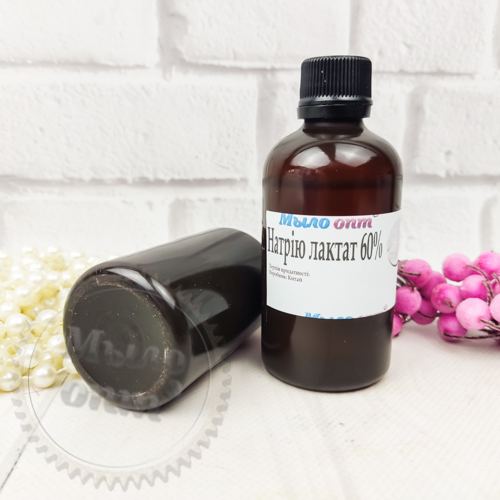



 Add to cart
Add to cart Buy in 1 click
Buy in 1 click

 Add a review
Add a review To favorites
To favorites To compare
To compare



